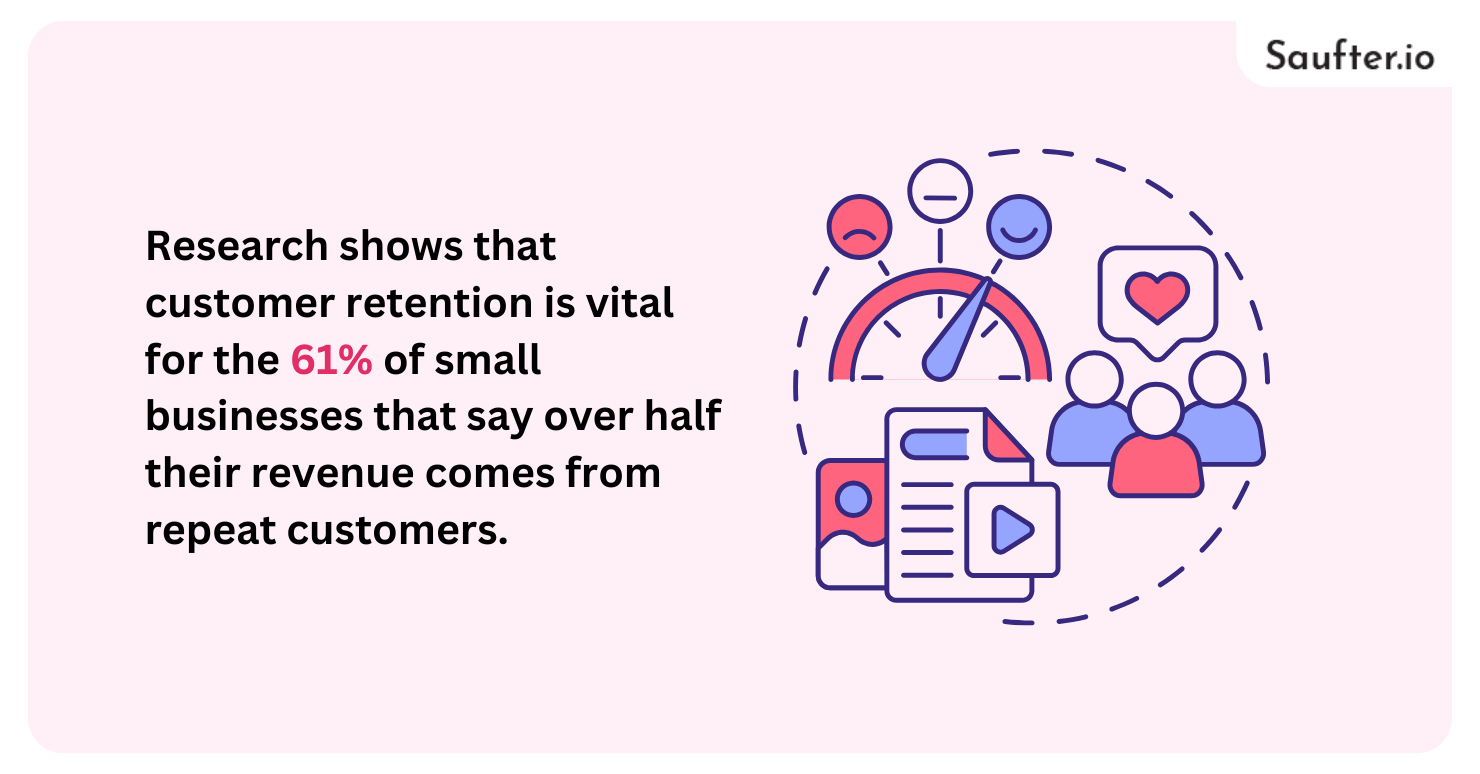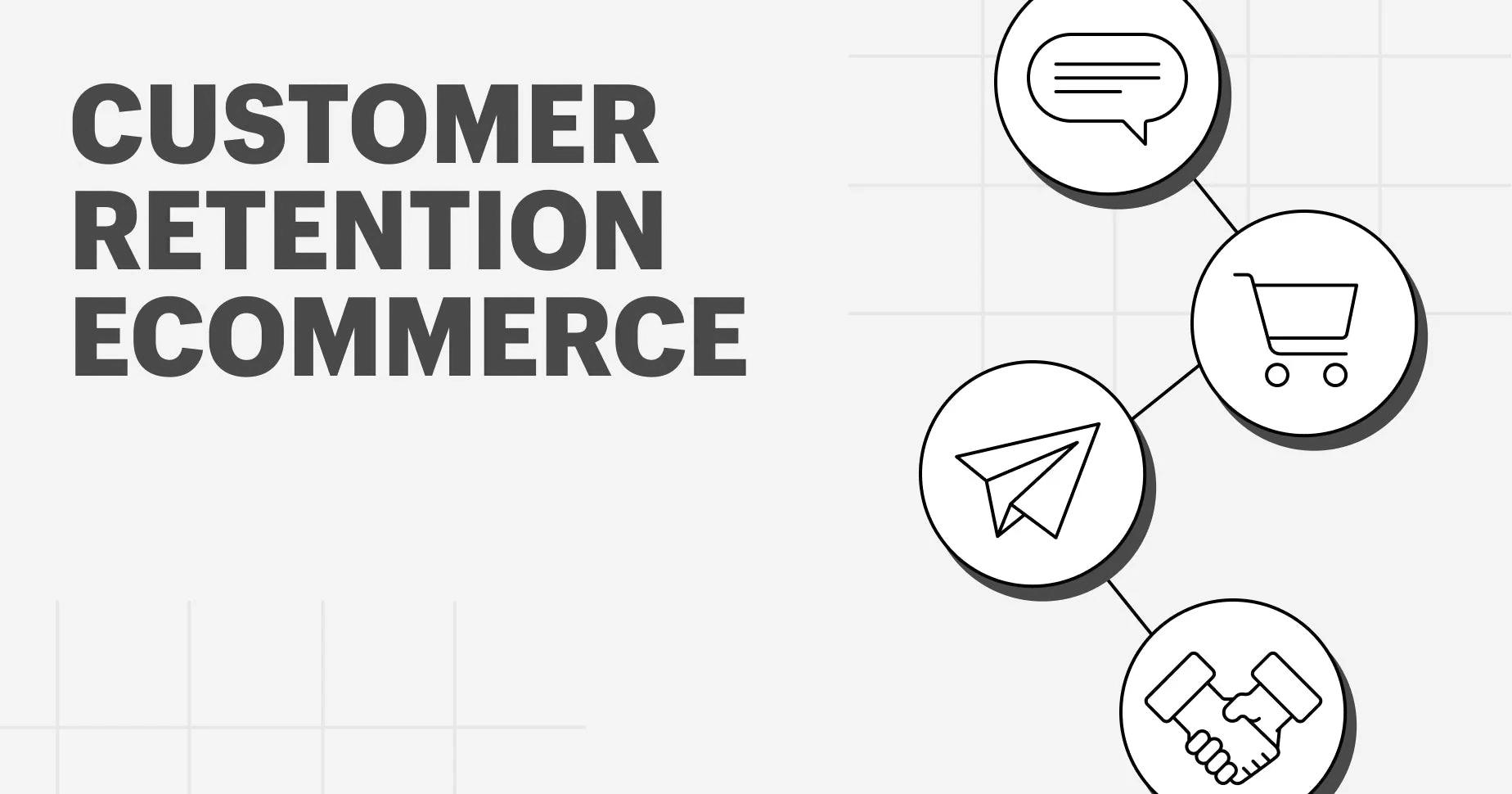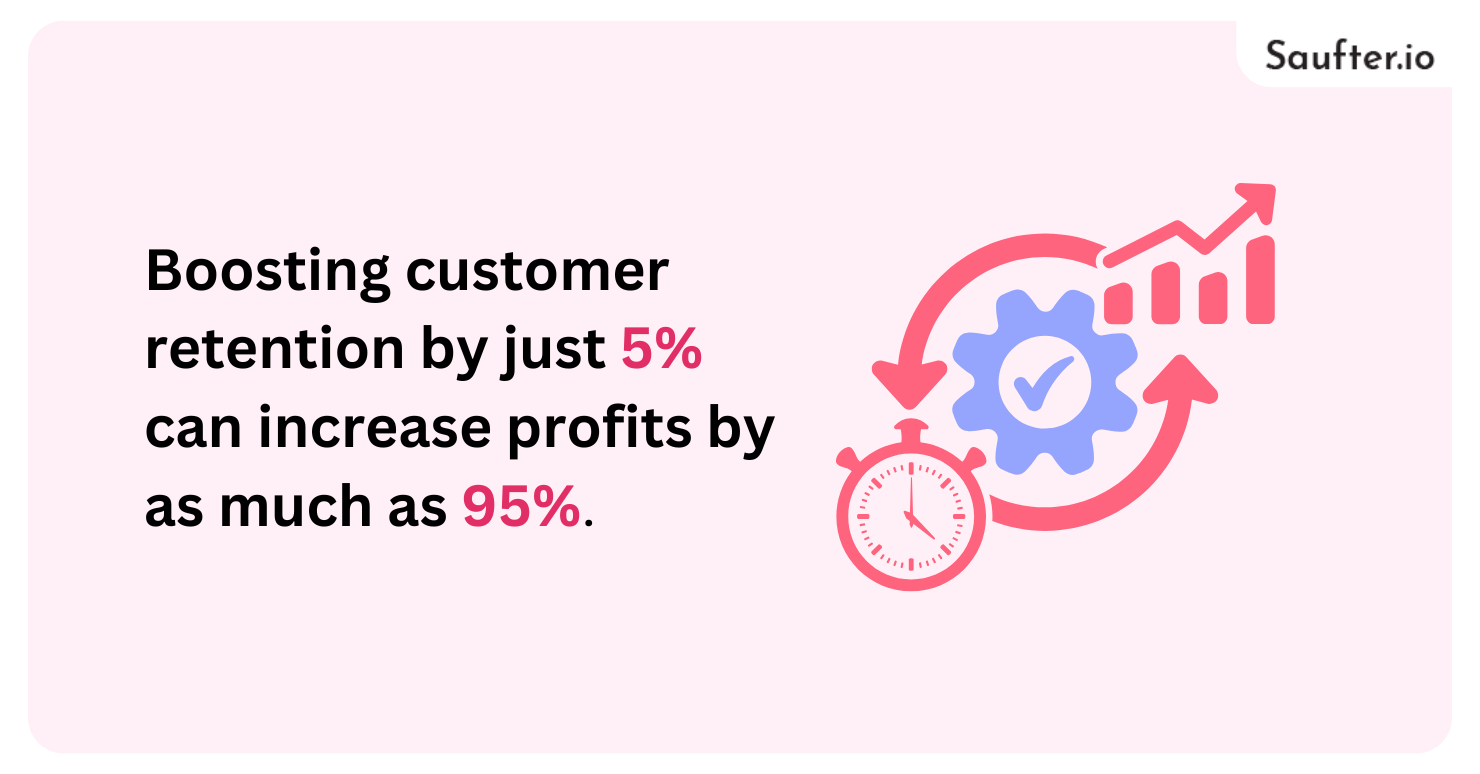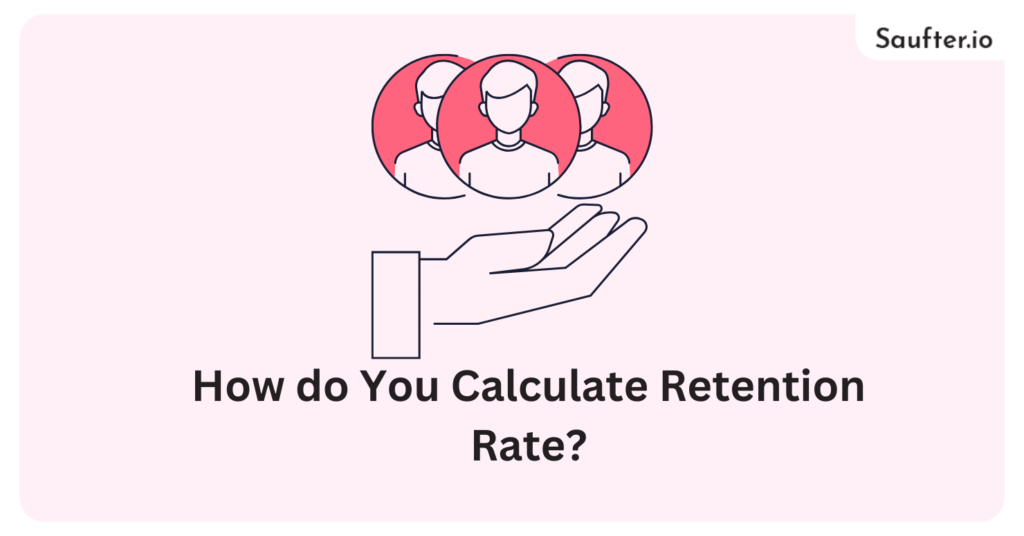Last Updated: December 2025
In today’s hyper-competitive market, retaining customers is not just an advantage, it’s a necessity. Research shows that customer retention is vital for the 61% of small businesses that say over half their revenue comes from repeat customers. Moreover, acquiring a new customer is five times more expensive than retaining an existing one.

With numbers like these, knowing how to calculate retention rate becomes critical for any business, especially SaaS and subscription-based models.
If you want to sustain long-term growth and build customer loyalty, mastering how to calculate retention rate accurately is your starting point. This guide will walk you through what retention rate is, why it matters, how to calculate retention rate, and most importantly, how you can improve it to grow your business sustainably.
What is Retention Rate?
Before diving into how to calculate retention rate, let’s clarify what this term means.
Retention rate is the percentage of customers a business keeps over a specific period. A high retention rate indicates customer satisfaction and loyalty, meaning your users see continued value in your product or service. On the flip side, a low retention rate signals dissatisfaction, higher churn, and potential revenue loss.
It’s important to remember that retention rate is the opposite of churn rate; where churn focuses on how many customers you lose, retention highlights how many you successfully keep. For subscription businesses, understanding both metrics is essential for growth forecasting and revenue planning.
Why Should You Measure Retention Rate?
Learning how to calculate retention rate helps you unlock powerful insights about your business health. Here’s why it matters:
- Retention drives profitability. As mentioned earlier, retaining customers is significantly cheaper than acquiring new ones.
- Customer loyalty fuels growth. Repeat customers tend to spend more over time and are more likely to refer new customers.
- Retention rate benchmarks your performance. Comparing your numbers against industry averages gives you clarity on where you stand and what improvements are needed.
- Retention reveals product-market fit. If your retention rate is high, it indicates your offering aligns well with customer needs.
How to Calculate Retention Rate

Let’s get to the heart of the matter: how to calculate retention rate effectively.
The simplest and most widely accepted formula is:
Customer Retention Rate = ((CE – CN) / CS) × 100
Where:
- CE = Customers at the end of the period
- CN = New customers acquired during the period
- CS = Customers at the start of the period
Example 1:
You begin January with 100 customers (CS). In January, you acquire 50 new customers (CN). By the end of January, you have 150 customers (CE).
Plugging this into the formula:
((150 – 50) / 100) × 100 = 100% retention rate
Example 2:
Start with 1,000 customers (CS). Gain 1,000 new customers (CN). End with 2,000 customers (CE).
Calculation:
((2,000 – 1,000) / 1,000) × 100 = 100% retention rate
Understanding how to calculate retention rate gives you a solid baseline. However, don’t stop there. This number only tells part of the story. To gain deeper insights, consider segmenting your data. For example:
- Retention by geographic location
- Retention by customer tenure (new vs. long-term users)
- Retention by product usage
These cohort analyses will help you identify patterns and potential weaknesses in your retention strategy.
Factors That Influence Retention Rate

While knowing how to calculate retention rate is crucial, understanding what drives this number is just as important. Several factors can directly impact your customer retention performance. Let’s dive deeper into the key influences:
1. Customer Experience
A positive, seamless customer experience can make all the difference. Every touchpoint matters, from the first website visit to onboarding, product usage, customer support, and even billing. Businesses that prioritize a frictionless user journey reduce the chances of frustration and increase customer loyalty.
2. Product Value
Your product must continuously deliver on its promise. Customers stay when they perceive ongoing value, whether through core features, regular updates, or performance improvements. Highlight the outcomes your product enables, not just the features. Regularly releasing enhancements, listening to user feedback, and demonstrating ROI will help users feel their investment is worthwhile.
3. Pricing Strategy
Price plays a significant role in customer retention. A competitive and fair pricing model that aligns with customer expectations can encourage longer relationships. Consider offering flexible pricing tiers, discounts for annual commitments, or usage-based billing to cater to different customer segments. Transparency in pricing also builds trust; hidden fees or sudden price hikes can quickly lead to dissatisfaction and attrition.
4. Customer Support
Prompt, knowledgeable, and empathetic customer support is a cornerstone of retention. Fast response times, multi-channel support options (like chat, email, and phone), and proactive outreach (such as check-ins or satisfaction surveys) all contribute to higher retention rates. Support isn’t just about solving problems, it’s about making customers feel valued.
5. Payment Failures
Involuntary churn due to payment failures is more common than you might think. Expired credit cards, failed transactions, or missed payment reminders can all result in losing valuable customers unintentionally. Utilizing tools like Baremetrics Recover helps businesses automate dunning emails, retry failed payments, and update billing information seamlessly. Proactively managing this reduces churn caused by avoidable errors.
6. Community and Engagement
Building a strong community around your brand fosters a sense of belonging and encourages long-term loyalty. Engage your customers through social media groups, user forums, webinars, and events. When customers feel part of something larger, they’re more likely to stay committed to your brand and less likely to consider competitors.
7. Regular Communication and Education
Keep customers informed and educated about how to maximize your product’s value. Regular newsletters, feature updates, webinars, and tutorial videos can help users unlock new benefits and stay engaged. Proactive communication reinforces the value they’re receiving and keeps your brand top of mind.
How to Improve Retention Rate
Now that you understand how to calculate retention rate, let’s focus on actionable ways to improve it.
1. Gather Customer Feedback
Understanding customer sentiment is vital. Send surveys to active customers to find out what they love and where they face challenges. Likewise, the survey churned customers to understand why they left. Questions to ask:
- What features do you value most?
- What improvements would make you stay longer?
- Why did you decide to cancel your subscription?
2. Optimize Customer Onboarding
A smooth onboarding experience sets the tone for the customer relationship. Help customers realize value quickly through guided tours, helpful content, and responsive support.
3. Use Proactive Communication
Stay ahead of potential issues by sending payment reminders, feature updates, and personalized messages that keep customers engaged.
4. Leverage Data and Analytics
Track customer behavior and usage patterns. This helps you spot signs of disengagement early and take corrective action before they churn.
5. Reward Loyalty
Implement loyalty programs, offer exclusive discounts, or provide early access to new features to reward your long-term users.
Remember: learning how to calculate retention rate is just the beginning. You must act on the insights gained from your retention metrics to build a thriving, loyal customer base.
Importance of Customer Retention in E-commerce

In the fast-paced world of e-commerce, keeping your existing customers is more valuable than ever. With acquisition costs rising sharply, businesses can no longer afford to focus solely on attracting new buyers. Instead, building strong customer relationships and investing in customer retention strategies pays off significantly in the long run.
Retained customers tend to spend more over time. They trust your brand, understand your products, and are more likely to make repeat purchases without the need for aggressive marketing. That’s a game-changer for any e-commerce business looking to scale sustainably.
Real-world customer retention examples show just how powerful this can be. Brands like Amazon and Sephora excel at keeping customers engaged through personalized recommendations, loyalty programs, and seamless shopping experiences. These customer retention examples highlight the importance of making every interaction count, from smooth checkouts to proactive customer support.
Moreover, loyal customers often become your brand advocates. They refer friends, leave positive reviews, and help spread word-of-mouth organically. This not only reduces marketing spend but also strengthens your market position.
Ultimately, focusing on customer retention helps you build a more predictable revenue stream. It’s about creating lasting relationships rather than chasing one-time sales. By learning from proven customer retention examples, you can craft experiences that keep customers coming back, driving both growth and profitability.
Let us now introduce you to the best SaaS AI-based Email marketing tool- Saufter.io
Saufter: The Best SaaS Email Marketing Tool

In today’s fast-moving digital landscape, Saufter AI emerges as a game-changing email marketing solution, especially for SaaS businesses, e-commerce platforms, and online brands. Powered by advanced artificial intelligence, Saufter helps you streamline your campaigns, boost engagement, and increase conversions through smart automation and data-backed strategies.
Key Features
- Competitor Email Tracking: Automatically monitors and analyzes your competitors’ email campaigns, helping you stay ahead of the curve.
- User Behavior Analysis: Studies user interactions on your website and tracks their journey to generate targeted campaign suggestions.
- Personalized Email Campaigns: AI-driven personalization enhances email deliverability and engagement, ensuring your messages reach the right audience.
- Cohort-Based Suggestions: Segment users based on their engagement levels and behaviors to optimize campaign effectiveness
Conclusion

In the fast-paced world of SaaS and subscription services, understanding how to calculate retention rate is not optional; it’s a competitive necessity. With customer acquisition costs soaring, retention becomes your most profitable growth lever.
By using the formula ((CE – CN) / CS) × 100, you gain clarity on how well you’re keeping your customers. But remember, while knowing how to calculate retention rate provides valuable insights, it’s what you do with those insights that truly counts.
Use this metric alongside customer feedback, cohort analysis, and behavioral data to strengthen your retention strategy. After all, boosting customer retention by just 5% can increase profits by as much as 95%, making every effort in this area worthwhile.
Start today by mastering how to calculate retention rate, monitor it regularly, and watch your customer loyalty and profits soar.
















